
|
|
|||||||||||||
|
The work of this day included the heavenly bodies in their relation to the earth, and the adjusting of the laws, which regulate them. Not only were they made for the purpose of giving light, but also “for signs and for seasons and for days and years” (1:14). The entire array of heaven including the moon, the sun, the stars, and countless galaxies was complete and fully functioning on the day God made it.
The Heavenly Bodies Created on this Day Perform Three Functions 1. Separation - The stars and heavenly bodies were given to separate day from night. There are two “great lights,” the greater (the sun), to govern the day, and a lesser (the moon), to govern the night. - “If the brightness or temperature of the sun were increased or decreased by only a few percentage points either way, life as we know it would soon end on earth.” (9, pg. 111) - “The moon, like the sun, helps keep the perfect balance of earth’s life sustaining environment. Ocean tides are caused by the moon’s gravitational pull. High tides align with the moon on both sides of the earth. The earth bulges slightly both toward and away from the moon, and this affects the water level of the oceans.” (9, pg. 111) - Scripture speaks of how the heavenly bodies govern our days, nights, months, and years, and thus our life patterns.
2. Regulation - Not only do the heavenly bodies mark the passing of night and day, but also they would serve as permanent signposts: “Let them be for signs and seasons, and for days and years” (1:14). - They set our calendars. They determine the length of a year. They divide the year into seasons. And they mark the passage of our days and nights. - The sun determines our days. The moon determines our months. And the stars, sun, and moon all determine our seasons. - Because the earth is tilted on its axis, the sun’s rays strike different parts of the earth at different angles throughout the year. This produces seasons that are critical for the rejuvenation of life, the growing of crops, and life on earth. - The stellar bodies determine when we eat, when we work, and when we sleep. And all of this was set in motion perfectly on day four of creation. - We know the stellar bodies are where we get our day, month and year. Where do we get our week? The creation week of Genesis 1. It was the period of time in which God created the universe, and ever since, it has governed how humanity makes time.
3. Illumination - The third and most obvious reason for the heavenly bodies is to provide permanent light that illuminates the earth. Genesis 1:15 says, ”and let them be for lights.” - By whatever means God had previously illuminated the earth, whether a supernatural light source, glow, or just by energy, it was no longer necessary. The sun, moon and stars would henceforth give light permanently to the earth.
Note the closing of Genesis 1:16, “He made the stars also.” The economy of the words is staggering considering the vast array of billions of known galaxies each containing billions of stars. Some of these stars are unfathomably large, millions of times larger than our own sun. - Taking the Bible literally, concerning creation, the universe would be no more than ten thousand years old. If this is what Scripture teaches, how can we see light from a galaxy over a billion light years away be possible? - According to Einstein’s Theory of Relativity; time and space are not constants. - “Special Relativity, proposed that distance and time are not absolute. General Relativity proposed that gravity, as well as motion, can affect the intervals of time and of space. The gravity of any mass, such as our sun, has the effect of warping the space and time around it. For example, the angles of a triangle no longer add up to 180 degrees and clocks tick more slowly the closer they are to a gravitational mass like the sun.” (21) - There is also evidence that the speed of light is not constant. - “The crux of Einstein’s theory of relativity – that E = mc2 – is under challenge, following evidence that the speed of light might be slowing down.” (22) - “According to the theory of inflation, the Universe grew by a factor of 10 to the sixtieth power in less than 10 to the negative thirty seconds, so the ‘edges’ of the Universe were expanding away from each other faster than the speed of light.” (23) - “For generations, physicists believed there is nothing faster than light moving through a vacuum -- a speed of 186,000 miles per second. But in an experiment in Princeton, New Jersey, physicists sent a pulse of laser light through cesium vapor so quickly that it left the chamber before it had even finished entering. The pulse traveled 310 times the distance it would have covered if the chamber had contained a vacuum. Researchers say it is the most convincing demonstration yet that the speed of light -- supposedly an ironclad rule of nature -- can be pushed beyond known boundaries. ‘Our experiment does show that the generally held misconception that nothing can travel faster than the speed of light is wrong.’" (24) - “In their laboratory, Hau and her colleagues have been able to slow a pulse of light, and even stop it, for several-thousandths of a second.” (25) - The authority of the Bible should never be comprised by mankind’s “scientific” proposals. Remember, one small piece of unknown evidence can drastically change a theory, so that what was once fact is no longer so. - Science can only attempt to explain these mysteries by means of ever changing theories. But the testimony of Scripture stands sure and unchanging.
What does this verse tell you about why God created the universe? PS 19:1 The heavens are telling of the glory of God; And their expanse is declaring the work of His hands. Psalm 19:1 (NASB)
Psalm 147:4 tells us something amazing. PS 147:4 He counts the number of the stars; He gives names to all of them. Psalm 147:4 (NASB)
Day 5 (Sea & Flying Creatures) GE 1:20 Then God said, “Let the waters teem with swarms of living creatures, and let birds fly above the earth in the open expanse of the heavens.” GE 1:21 God created the great sea monsters and every living creature that moves, with which the waters swarmed after their kind, and every winged bird after its kind; and God saw that it was good. GE 1:22 God blessed them, saying, “Be fruitful and multiply, and fill the waters in the seas, and let birds multiply on the earth.” GE 1:23 There was evening and there was morning, a fifth day. Genesis 1:20-23 (NASB)
By day 5 the creative work of God will now consist primarily in filling the earth with living creatures. Once again the means of creation is a decree from God. “Then God said...” - He spoke the full array of sea creatures and birds into existence immediately, out of nothing. - Notice that the sea creatures could already swim and the birds could fly. These weren’t skills acquired thorough any evolutionary process. - “And God saw that it was good” (v. 21).
Scripture makes a clear distinction between animal and plant life. - Trees and plants are nowhere in Scripture referred to as “living creatures.” This designation is reserved for animals, insects, birds, fish, and man. Things that move and have a central nervous system. - Plants are of course living in a sense that they have a genetic makeup and can reproduce, but they do not have conscious life. - In verse 21, the Hebrew noun in the expression “every living creature” is neh-fesh (Strong’s, 5315, vp,n‡<), which means a breathing creature. It speaks of soulish life, creaturely life, as opposed to the mere organic life of plants.
Genesis 1:22 says, “God blessed them, saying, ‘Be fruitful and multiply, and fill the waters in the seas, and let birds multiply on the earth.’” Scripture is expressly teaching that God completed His creation of all the sea creatures and birds before He gave the order to reproduce. If evolution were true, it would mean that animal reproduction must have already been going on for millions of years before so many sea creatures and birds could emerge. - The message of this passage is that God created all the various birds and sea creatures with all of the unique features in place, with all of the genetic variability established, and with the ability to reproduce according to their kind. - Notice that the expression, “after their/its kind,” which appears twice in verse 21, twice in verse 24, three times in verse 25, and once each in verses 11 and 12. It is used every time procreation is mentioned in the Genesis account. It underscores the very truth evolution denies: that when living creatures reproduce, they can produce only creatures similar to themselves.
Genesis 1:23 continues the measure of creation days by the familiar pattern: ”There was evening and there was morning, a fifth day.”
Day 6 (Land Animals & Man) GE 1:24 Then God said, “Let the earth bring forth living creatures after their kind: cattle and creeping things and beasts of the earth after their kind”; and it was so. GE 1:25 God made the beasts of the earth after their kind, and the cattle after their kind, and everything that creeps on the ground after its kind; and God saw that it was good. GE 1:26 Then God said, “Let Us make man in Our image, according to Our likeness; and let them rule over the fish of the sea and over the birds of the sky and over the cattle and over all the earth, and over every creeping thing that creeps on the earth.” GE 1:27 God created man in His own image, in the image of God He created him; male and female He created them. GE 1:28 God blessed them; and God said to them, “ Be fruitful and multiply, and fill the earth, and subdue it; and rule over the fish of the sea and over the birds of the sky and over every living thing that moves on the earth.” GE 1:29 Then God said, “Behold, I have given you every plant yielding seed that is on the surface of all the earth, and every tree which has fruit yielding seed; it shall be food for you; GE 1:30 and to every beast of the earth and to every bird of the sky and to every thing that moves on the earth which has life, I have given every green plant for food”; and it was so. GE 1:31 God saw all that He had made, and behold, it was very good. And there was evening and there was morning, the sixth day. Genesis 1:24-31 (NASB)
Creation now makes its highest advance, and reaches the nobler forms of animal life, the beasts of the earth, and at last, the human family. The distinct word “create” is used for the third time in verse 27. In the first verse it used with regard to the entire universe in its original form, in the 21st verse with respect to the first creation of life, and now here, to mark the final stage of creation, man himself.
As day 6 dawns, we have the introduction of all kinds of land animals: ”cattle and creeping things and beasts of the earth after their kind” - Once again, the biblical account makes it very clear that these creatures did not evolve from lower life forms. All of them were created instantaneously. - Scripture names three categories that God created: cattle, creeping things, and beasts of the earth.
1. Cattle - The Hebrew word translated “cattle” is a word that speaks of livestock and animals that are capable of being domesticated (sheep, goats, and oxen).
2. Creeping Things - The Hebrew word for “creeping things” is reh-mes (Strong’s, 7431, cm,r&<‡<), which means a reptile or any other rapidly moving animal that creepeth. - This includes reptiles, insects, and perhaps small rodents. 3. Beasts of the Earth - The Hebrew word for “beasts of the earth” is khah-ee (Strong’s, 2416, hY:j'), which means wild beast. - This would include all other animals.
Genesis 1:25 repeats the familiar phrase that gives us God’s assessment of His creation, “And God saw that it was good.”
The Direct Creation of Adam and Eve
GE 1:26 Then God said, “Let Us make man in Our image, according to Our likeness; and let them rule over the fish of the sea and over the birds of the sky and over the cattle and over all the earth, and over every creeping thing that creeps on the earth.” GE 1:27 God created man in His own image, in the image of God He created him; male and female He created them. GE 1:28 God blessed them; and God said to them, “ Be fruitful and multiply, and fill the earth, and subdue it; and rule over the fish of the sea and over the birds of the sky and over every living thing that moves on the earth.”
Then God said, “Let Us…” - The plural word Elohiym is used here, again showing the work of the Trinity in creation. - It cannot be believed that God discussed the creation with the angels and included them as participants in His decision to create man. - John 1:1 affirms that the Word was God, and in the beginning was with God, and that without Him there was nothing made that had been made. JN 1:1 In the beginning was the Word, and the Word was with God, and the Word was God. JN 1:2 He was in the beginning with God. JN 1:3 All things came into being through Him, and apart from Him nothing came into being that has come into being. John 1:1 (NASB) - This supports the thought that both Jesus Christ and the Holy Spirit (revealed in Genesis 1:2 as active in the creation) should be understood as included in “Us” and “Our” here in verse 26.
“Let Us make man in Our image, according to Our likeness…” - As to the manner in which God made man in His likeness, it is significant that man himself is a “trinity” of sorts; having mind, spirit, and body. - Other phases of human likeness to God are seen in such things as freedom of will, moral responsibility, intellectual achievement, and creativity.
“And let them rule…” - The intention of God in the creation of man is revealed to have been the placement of man over the earth and all that is in it..
“God created man in His own image, in the image of God He created him; male and female He created them.” - Just to be sure there is no misunderstanding note how the Scripture restates three times in verse 27 that God created man. Evolution cannot be read into this passage. - This means that woman was also made in the image of God.
“God blessed them; and God said to them, ‘Be fruitful and multiply, and fill the earth…” - The procreation and nurturing of further generations upon the earth is a command. - “Fill the earth” is sometimes translated replenish the earth. Replenish is not a correct translation. - The Hebrew word for “fill” is maw-lay (Strong’s, 4390, alem;<), which means to fill or be full off. - This does not mean a re-population of the earth. - There is no record of previous populations that are sometimes alleged from what is written here to have existed prior to humanity. The passage should be translated, Fill the earth and subdue it.
GE 1:29 Then God said, “Behold, I have given you every plant yielding seed that is on the surface of all the earth, and every tree which has fruit yielding seed; it shall be food for you; GE 1:30 and to every beast of the earth and to every bird of the sky and to every thing that moves on the earth which has life, I have given every green plant for food”; and it was so. GE 1:31 God saw all that He had made, and behold, it was very good. And there was evening and there was morning, the sixth day.
The dominion of man over the animal creation was stated in Genesis 1:28; and here that dominion is extended to the plant world as well. The lesser dominion of the animals over the plant world was also noted in verse 30.
“And behold, it was very good…” - The goodness and wisdom of God are thus attested to by his creation.
Day 7 GE 2:1 Thus the heavens and the earth were completed, and all their hosts. GE 2:2 By the seventh day God completed His work which He had done, and He rested on the seventh day from all His work which He had done. GE 2:3 Then God blessed the seventh day and sanctified it, because in it He rested from all His work which God had created and made. Genesis 2:1-3 (NASB)
The last day is called the Sabbath and signals the completion of God’s creative work. It implies that God has completed the material universe.
|
CONCLUSION
The universe was created in six days, not billions of years EX 20:11 “ For in six days the LORD made the heavens and the earth, the sea and all that is in them, and rested on the seventh day; therefore the LORD blessed the Sabbath day and made it holy. Exodus 20:11 (NASB)
EX 31:17 “ It is a sign between Me and the sons of Israel forever; for in six days the LORD made heaven and earth, but on the seventh day He ceased from labor, and was refreshed.” Exodus 31:17 (NASB)
Summary of the days of creation PR 8:22 “The LORD possessed me at the beginning of His way, Before His works of old. PR 8:23 “From everlasting I was established, From the beginning, from the earliest times of the earth. PR 8:24 “When there were no depths I was brought forth, When there were no springs abounding with water. PR 8:25 “ Before the mountains were settled, Before the hills I was brought forth; PR 8:26 While He had not yet made the earth and the fields, Nor the first dust of the world. PR 8:27 “When He established the heavens, I was there, When He inscribed a circle on the face of the deep, PR 8:28 When He made firm the skies above, When the springs of the deep became fixed, PR 8:29 When He set for the sea its boundary So that the water would not transgress His command, When He marked out the foundations of the earth; PR 8:30 Then I was beside Him, as a master workman; And I was daily His delight, Rejoicing always before Him, Proverbs 8:22-30
Is there anywhere in the Bible that teaches (or even suggests) that God used evolution as part of His creative process?…NO - If not, then why do you suppose so many people believe God used evolution?1. Some people believe that scientists have proven evolution to be true. This occurs mostly because of the education system, which teaches evolution as a fact. In most school systems the textbooks used have censored out any scientific information refuting evolution. 2. Some people do not want to be ridiculed because of a belief in creation therefore they adopt a worldview based on evolution. 3. Peer pressure. Christians who work in the education system (especially universities) will adopt an evolutionary worldview to keep their job or remain in good standing with their peers. 4. Lack of knowledge. Sometimes Christians are unwilling to even investigate the evidence for creation. 5. “Many in the church are too intimidated or too embarrassed to affirm the literal truth of the biblical account of creation. They are confused by a chorus of authoritative-sounding voices who insist that it is possible – and even…necessary – to reconcile Scripture with the latest theories of the naturalists.” – John MacArthur (9, pg. 17)
There is no hint of the development of the forms of creation out of the earlier species of life that had successfully appeared, but all are distinct acts unlike any that preceded it.
- “The Bible is not directly intended to be a book about natural science, yet it never contradicts the real facts of nature (once they are fully understood); and in many things has been found to be a truly marvelous anticipation of the most remarkable discoveries of modern science. Even the statements and allusions which at one time were criticized by science as incorrect and ignorant have been found by latter discoveries to be in real accord with the constitution of nature, although opposed to what was once supposed to be scientific truth.” – A.B. Simpson (5) pg. 18
|
REFERENCES
1. It Matters What We Believe by Mike Riddle, 2003 2. It All begins with Genesis by Sheila Richardson, 2002 3. The New Strong’s Exhaustive Concordance of the Bible by James Strong (1822-1894), 1996 4. Systematic Theology: An Introduction to Biblical Doctrine by Dr. Wayne Grudem, 1994 5. The Christ in the Bible Commentary Volume One by A.B. Simpson, 1888 6. Does God Exist? magazine article Making the Bible a Grocery Store Tabloid, July/August 2004 7. Metaphysics by Aristotle (384 – 322 BC) 8. Argument from silence online at http://encyclopedia.thefreedictionary.com 9. The Battle for the Beginning by John MacArthur, 2001 10. Discover Magazine article Guth’s Grand Guess, April 2002 11. First Principles by Herbert Spencer (1820 – 1903), 1862 12. Collier’s Encyclopedia, Volume 21, 1997 13. United States Geological Society online at http://ga.water.usgs.gov 14. Engineering & Science magazine article Planetary Phrenology: The Lumps and Bumps of the Earth by Michael Kobrick, 2002 15. Discover magazine article Guth’s Grand Guess, April 2002 16. Merriam-Webster Dictionary online at http://www.m-w.com 17. Big Bang Theory – An Overview online at http://big-bang-theory.com 18. Goodrick/Kohlenberger Number Definitions (The NIV Exhaustive Concordance), 2002 19. National Science Education Standards by The National Academy of Sciences, 1996 20. Los Angeles Times newspaper article Grappling with Science and Religion, March 14, 1999 21. Public Broadcasting Service (NOVA) online at http://www.pbs.org/wgbh/nova/einstein/relativity/ 22. CNN online at http://archives.cnn.com/2002/WORLD/asiapcf/auspac/08/07/australia.lightspeed/ 23. Cornell University, Curious About Astronomy? online at http://curious.astro.cornell.edu/question.php?number=387 24. CNN online at http://archives.cnn.com/2000/TECH/space/07/20/speed.of.light.ap/ 25. Jet Propulsion Laboratory online at http://www.jpl.nasa.gov/releases/2003/73.cfm
|
|||||||||||
|
|
|||||||||||||
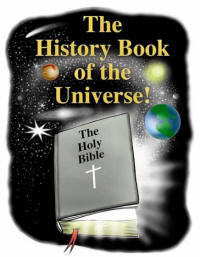 INTRODUCTION
INTRODUCTION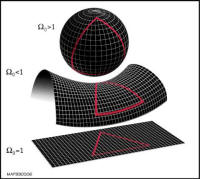 BODY
BODY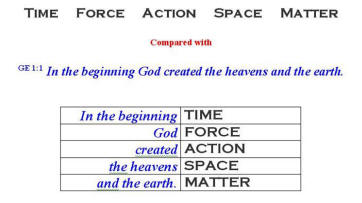
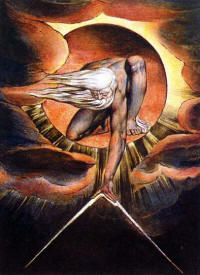 God
Created the Universe Out of Nothing
God
Created the Universe Out of Nothing Argument
From Silence
Argument
From Silence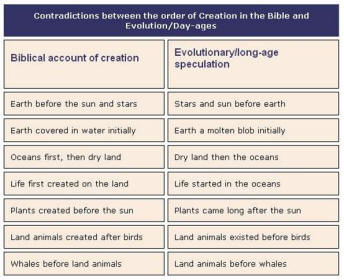
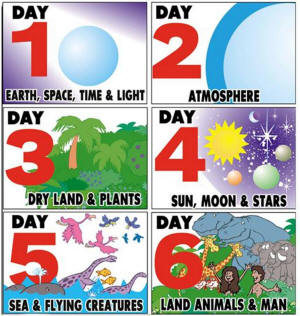
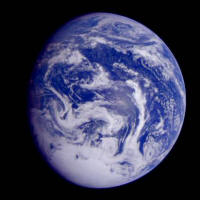
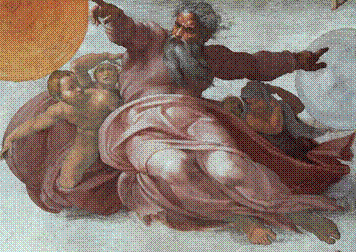 Day
4 (Sun, Moon & Stars)
Day
4 (Sun, Moon & Stars)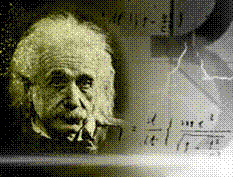 “There
was evening and there was morning, a fourth day.”
“There
was evening and there was morning, a fourth day.”